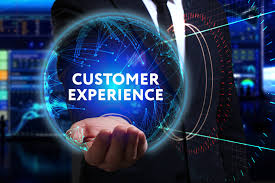The Importance of Customer Experience: Turning Every Interaction into a Lasting Impact
Customer experience (CX) refers to every interaction a customer has with your brand—from the first touchpoint through to post-purchase support. While the term is often used broadly, its meaning is more nuanced, encompassing the entire customer journey. From the initial ad they see to the quality of their engagement with your customer support, CX reflects the customer’s perception of your brand, compared to the promises you’ve made. Improve Customer Experience.
What Is Customer Experience (CX)?
At its core, CX measures how customers perceive their interactions with your organization. It goes beyond customer service and spans every touchpoint, whether it’s the ease of navigating your website, the tone of your marketing emails, or the post-purchase support experience. A strong customer experience is critical for fostering brand loyalty and meeting customer expectations at every step of their journey.
Why Customer Experience Matters
In today’s competitive marketplace, customer expectations are at an all-time high. According to research, 80% of customers say that the experience a company provides is just as important as its products or services. Whether you’re in B2C or B2B, an exceptional customer experience translates into loyalty, brand advocacy, and revenue growth.
Some key benefits of prioritizing CX include:
- Customer Loyalty and Retention: Positive experiences lead to repeat customers and turn them into brand advocates.
- Brand Reputation: A strong customer experience enhances your brand’s reputation, while a poor one can cause long-term damage.
- Competitive Differentiation: In a crowded marketplace, customer experience becomes a unique selling point.
- Increased Revenue: Satisfied customers are more likely to spend more, leading to higher sales through cross-sells and upsells.
- Lower Churn Rates: Addressing customer pain points reduces the likelihood of them leaving for a competitor.
Key Elements of a Great Customer Experience
Our research highlights several factors that customers deem essential for a great experience:
- Immediate Response: 77% of customers expect a company representative to be available as soon as they reach out.
- Omnichannel Flexibility: 74% expect seamless functionality whether interacting online, in person, or over the phone.
- Unified Information: 70% expect every company representative to have the same details about their interactions.
- Consistency Across Departments: 79% expect interactions across departments to feel cohesive, like dealing with one unified entity.
However, many companies fall short of these expectations. For example, 56% of customers report needing to repeat themselves to different representatives, and 55% say it feels like they’re interacting with separate departments rather than a single, unified brand. The good news? A subpar experience can be quickly remedied with exceptional customer service—75% of customers will forgive mistakes after receiving excellent support.
How to Measure Customer Experience
Measuring CX is essential for understanding what works and where improvements are needed. Popular methods include:
- Customer Satisfaction Score (CSAT): Measures satisfaction with specific interactions or services through a simple rating scale.
- Net Promoter Score (NPS): Evaluates the likelihood that customers will recommend your brand.
- Customer Effort Score (CES): Assesses how easy it is for customers to accomplish a task, like resolving an issue.
- Online Reviews and Feedback: Platforms like Google or Yelp provide real-time insights into customer sentiment.
Building a Successful CX Management Strategy
An effective CX management strategy aligns your entire business around the customer’s needs. It should include continuous feedback loops, data-driven decision-making, and a focus on creating a customer-centric culture. Improve Customer Experience.
Key Pillars of a CX Strategy:
- Listening to Customers: Gather feedback proactively and analyze customer interactions to understand their pain points and preferences.
- Building Detailed Customer Profiles: A unified profile ensures personalized experiences, leading to higher satisfaction and loyalty.
- Balancing Feedback Data: Combine structured feedback (e.g., survey ratings) with unstructured feedback (e.g., comments and conversations) for a holistic view.
- Connecting Experience to Financial Data: Track how changes in customer sentiment impact your business metrics to prioritize investments.
- Acting with Empathy: Demonstrate that customer feedback is valued by making improvements based on their input.
How to Improve Customer Experience
Delivering a standout customer experience requires a combination of people, processes, and technology. Here are five best practices for enhancing your CX:
- Understand the Customer Journey: Map out each touchpoint and identify areas for improvement.
- Empower Service Teams: Equip your teams with the tools and training to resolve issues efficiently and empathetically.
- Leverage Technology: Use AI-driven solutions like chatbots, field service management software, and personalized communications to enhance the customer experience.
- Act on Customer Feedback: Regularly collect and analyze feedback to inform your strategy.
- Foster a Customer-Centric Culture: Ensure that every department understands its role in delivering an exceptional customer experience.
The Role of Experience Management
Customer experience management (CXM) goes hand-in-hand with a broader experience management strategy. This includes not only customer interactions but also employee experiences, product quality, and brand perception. By implementing an experience management framework, companies can align technology, culture, and six core competencies to optimize all aspects of customer engagement.
The Bottom Line: Customer Experience Drives Success With Salesforce
Customer experience is no longer just a buzzword—it’s a critical factor for business success. By understanding and improving the customer journey, you can foster loyalty, reduce churn, and create a long-term competitive advantage. Start by building a strong CX framework, empowering your teams, and making data-driven decisions to lead the way in customer satisfaction.
Content updated August 2024.













